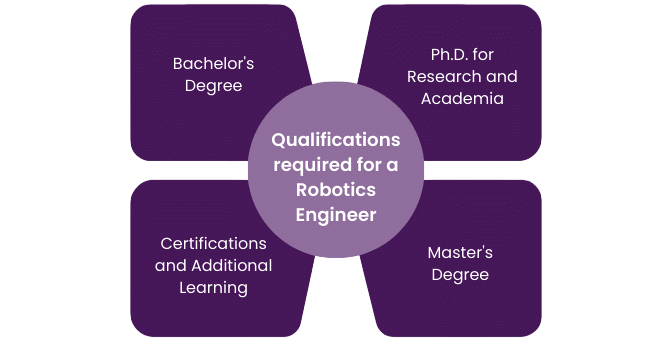
- Introduction to Robotics Engineering
- Educational Requirements
- Essential Skills for Robotics Engineers
- Programming Languages in Robotics
- Robotics Hardware and Components
- Certifications and Specializations
- Internships and Project Experience
- Robotics Career Pathways
- Industries Hiring Robotics Engineers
- Salary Expectations
- Conclusion
Introduction to Robotics Engineering
Robotics Engineering is a multidisciplinary field that blends mechanical engineering, electrical engineering, computer science, and systems thinking to design, build, and operate robots. These machines are designed to perform tasks ranging from repetitive manufacturing operations to complex medical procedures, space exploration, and even autonomous driving. As automation continues to reshape industries, robotics engineers are increasingly vital. They design systems that improve efficiency, safety, and precision. Robotics engineers work with both hardware and software constructing the physical form and writing the intelligence that drives the robot. The robotics field combines theoretical knowledge with hands-on application, demanding both problem-solving and creativity. From industrial robots on assembly lines to AI-powered service bots, robotics engineering offers endless opportunities to innovate and impact lives.
Ready to Get Certified in Machine Learning? Explore the Program Now Machine Learning Online Training Offered By ACTE Right Now!
Educational Requirements
Aspiring robotics engineers must build a strong academic foundation in STEM fields. They typically start with a bachelor’s degree in areas like Robotics, Mechanical, Electrical, or Computer Engineering. Their education includes vital courses such as calculus, linear algebra, physics, circuit design, control systems, and the basics of robotics. These subjects provide essential technical skills.

While a bachelor’s degree covers the basics, many professionals go for advanced degrees. A master’s program offers focused training in areas like machine learning and human-robot interaction. This training improves their chances of working in research and technology companies. For those seeking high-level research roles or teaching positions, obtaining a doctoral degree is crucial. This degree involves conducting original research and publishing work in fields like swarm or cognitive robotics. In addition to traditional academic routes, online platforms like Coursera, edX, and Udacity now offer robotics programs from top institutions like MIT and Stanford. This allows professionals to pursue ongoing education in this ever-changing tech field.
Essential Skills for Robotics Engineers
To succeed in robotics, professionals need a versatile skill set that spans multiple domains:
- Mathematics & Physics Kinematics, dynamics, control theory, and linear algebra are essential for motion planning and simulation.
- Mechanical Design: Understanding materials, stress analysis, CAD modeling (e.g., SolidWorks, AutoCAD) is crucial for building robust robots.
- Electronics & Circuitry: PCB design, microcontrollers (Arduino, Raspberry Pi), sensors, and actuators form the backbone of a robot’s hardware.
- Control Systems: PID controllers, feedback loops, and real-time systems are fundamental for precise operations.
- Problem-Solving: Ability to diagnose and fix issues across mechanical, electrical, and software domains.
- Communication: Collaborating with cross-functional teams, writing documentation, and presenting findings clearly.
- C/C++: Used in embedded systems and real-time applications due to low-level hardware access and high efficiency.
- Python: Popular for AI, machine learning, and scripting in frameworks like ROS (Robot Operating System).
- MATLAB: Preferred in academia and control systems for simulations and algorithm development.
- Java: Often used in Android-based robots and GUI applications.
- Demonstrates initiative, creativity, and technical depth.
- Helps in building a portfolio for jobs or graduate school.
- Line-following robots
- Gesture-controlled bots
- Pick-and-place robotic arms
- SLAM (Simultaneous Localization and Mapping) bots
- Drones with obstacle avoidance
- Robotics Engineer: Designs and builds robots for commercial or research purposes.
- Embedded Systems Engineer: Develops firmware for microcontrollers.
- Automation Engineer: Works on factory automation and control systems.
- AI/ML Engineer: Builds intelligent systems for perception, planning, and decision-making.
- Mechatronics Engineer: Integrates mechanical and electrical subsystems.
- Robotics Researcher: Works on cutting-edge innovation, often in academic or R&D labs.
- Systems Engineer: Ensures integration of software, mechanical, and electronic components.
- Manufacturing: Assembly lines, packaging, welding, and logistics.
- Healthcare: Surgical robots (e.g., Da Vinci system), prosthetics, rehabilitation.
- Aerospace and Defense: Drones, autonomous navigation, bomb-disposal bots.
- Automotive: Autonomous vehicles, robotic painting, inspection.
- Agriculture: Automated harvesting, drones for crop monitoring.
- Consumer Electronics: Smart home assistants, robotic vacuum cleaners.
- Construction: Bricklaying bots, 3D printing of structures.
- Entry-Level: ₹5–10 LPA (India), $70,000–$90,000 (US)
- Mid-Level: ₹12–20 LPA (India), $100,000–$130,000 (US)
- Senior-Level / R&D Roles: ₹25+ LPA (India), $150,000+ (US)
- Experience and specialization
- Academic qualifications
- Type of employer (startup vs MNC)
- Geographic location (urban vs rural, country-wise)
- Certifications, project portfolio, and a master’s or PhD can significantly enhance earning potential.

To Explore Machine Learning in Depth, Check Out Our Comprehensive Machine Learning Online Training To Gain Insights From Our Experts!
Programming Languages in Robotics
Robotics relies heavily on programming for control, decision-making, and automation.
Top Languages:
ROS (Robot Operating System): Not a language, but a middleware that enables communication between robot components. Compatible with both Python and C++.
Understanding both high-level algorithms and low-level programming gives robotics engineers an edge in building sophisticated systems.
Robotics Hardware and Components
Robots are amazing machines that engineers build from complex mechanical and electrical parts. They are made to imitate or even outperform human abilities. These machines have several key components. They include sensors like cameras and LIDAR for sensing their environment. Actuators made from motors and servos allow for accurate movement. Powerful microcontrollers, such as Arduino and Raspberry Pi, act as their brains. Important end effectors, like grippers and welders, provide special functions. Strong power sources, including lithium-ion batteries and solar cells, keep them running. The chassis and structure carefully house and support these parts, forming a complete system that requires great engineering accuracy. By skillfully combining these elements, robotics engineers create machines that not only replicate human actions but often go beyond traditional limits, advancing technology and improving efficiency.
Certifications and Specializations
Professionals looking to boost their credibility and gain structured learning in the fast-changing robotics industry can use certifications as an effective tool. They can pursue recognized credentials like the Certified Robotics Technician (SACA, ISA) or enroll in programs such as the Udacity Robotics Nanodegree and MIT xPro Robotics Essentials. These qualifications offer specific pathways for career growth. By obtaining specialized certifications in areas like Autonomous Systems, Medical Robotics, Industrial Automation, AI and Machine Learning, and Computer Vision, professionals gain valuable knowledge that significantly improves their competitiveness in specialized tech roles. By investing in these certification programs, individuals can clearly show their expertise, respond to new industry trends, and position themselves as valuable assets in the ever-evolving field of robotics.
Looking to Master Machine Learning? Discover the Machine Learning Expert Masters Program Training Course Available at ACTE Now!
Internships and Project Experience
Hands-on experience is often more valued than theoretical knowledge in robotics.
Importance of Projects:
Types of Projects:
Internships: Offer real-world exposure to product design, prototyping, and teamwork.
Apply through college, job boards (e.g., Internshala, LinkedIn), or directly to companies and labs.
Active participation in competitions (e.g., Robocon, FIRST Robotics, DARPA Challenges) can also significantly boost one’s profile.
Robotics Career Pathways
Robotics engineering offers a diverse range of roles depending on your skill set and interests.
Common Career Roles:
Progression often involves moving from hands-on development to team leadership, systems architecture, or R & D management.
Preparing for Machine Learning Job Interviews? Have a Look at Our Blog on Machine Learning Interview Questions and Answers To Ace Your Interview!
Industries Hiring Robotics Engineers
Robotics is no longer limited to manufacturing. Multiple sectors are actively hiring robotics professionals.
Key Industries:
Startups and research labs are also exploring social robotics, educational robotics, and even robotic pets.
Salary Expectations
Salaries in robotics engineering vary depending on region, industry, experience, and education.
Average Salaries (approximate figures as of 2025):
Factors Influencing Salary:
Conclusion
Robotics Engineering stands at the intersection of innovation and impact. As industries across the globe adopt automation, robotics engineers are in high demand for their ability to build intelligent, adaptive machines that improve efficiency and enhance quality of life. Whether you aim to build a robotic arm, develop autonomous drones, or lead cutting-edge AI research, a career in robotics offers infinite possibilities. With strong educational grounding, practical experience, and continuous learning, you can thrive in this dynamic and future-ready field.


